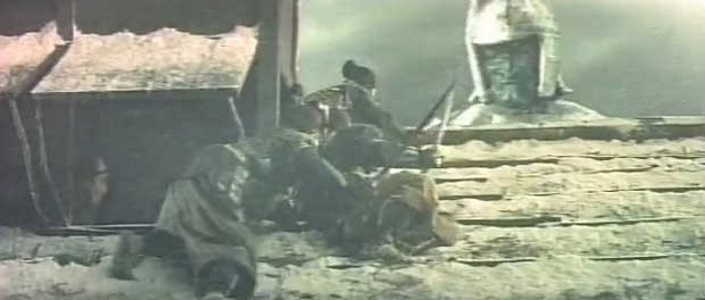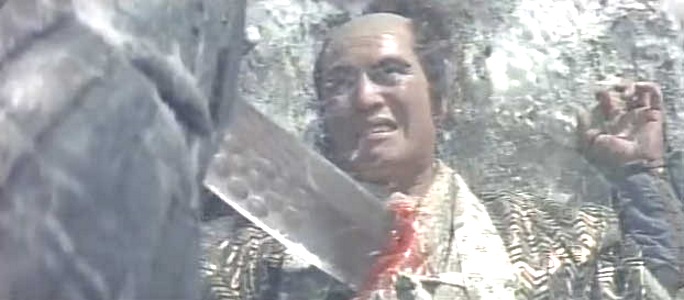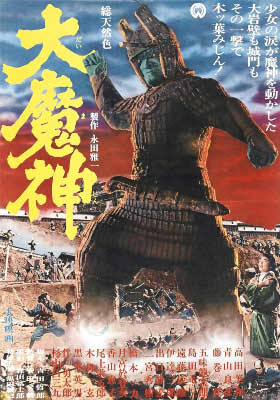
Besides their serious fare, in the 1960s Daiei Studio found good success with more commercial genre films. They produced a number of ghost (kaidan) films from the 1950s through the 60s, fantasy with The Invisible Man vs the Human Fly (1957), the Zatoich series starting in 1962 and the Sleepy Eyes of Death beginning in 1963 - but they were behind the Toho eight ball with the popular Kaiju films. They rectified that to some degree with Gamera in 1965 and his fellow monsters (Barugan, Gyaos, Viras among others), the Yokai films started in 1968 and the Daimajin trilogy in 1966. In the world of Kaiju, Daimajin is an odd man out. While all the other Kaiju films take place in contemporary times, Daimajin is set in feudal times when Japan was ruled by Lords with absolute power. Daimajin is also not a giant animal or creature but instead a giant God-like statue that comes to life to render justice and destruction. It is a time of superstition, folklore and belief in demons and monsters. Another oddity about this film is that it is primarily a samurai-drama film until the final 20-minutes. And not a bad one. The special effects are put on hold till that final 20-minutes and then we see where all the budget went in a lovely set-piece of destruction and death.
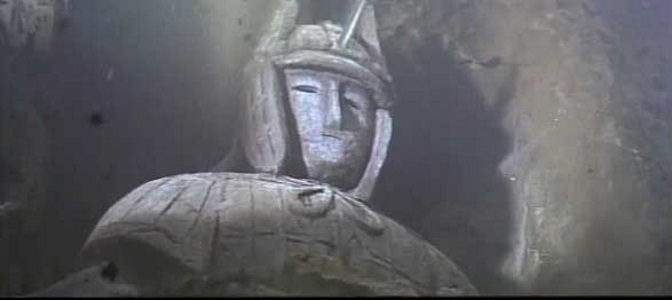
The mountains are rumbling and the peasants think that Daimajin - Majin to his friends - is trying to break out of his captivity. To keep him sealed they put on a ceremony of prayer, dance, music and masks led by the Priestess Shinobu (Otome Tsukimiya). Meanwhile back at the castle the Chamberlain Samanosuke (Ryûtarô Gomi) is leading an insurrection against his Lord Hanabusa. In the fighting the Lord is murdered along with his wife, but one of the Lord's men Kogenta (Jun Fujimaki) is able to escape with the small prince Tadafumi and the princess Kozasa. The Priestess leads them into the mountains where everyone is scared to go. And there they stay for ten years as Samanosuke consolidates his power through cruelty and slavery. He scorns the myth of Daimajin and orders his men to go break the statue on the mountain where it lays. Big mistake. Don't fuck with the Gods.
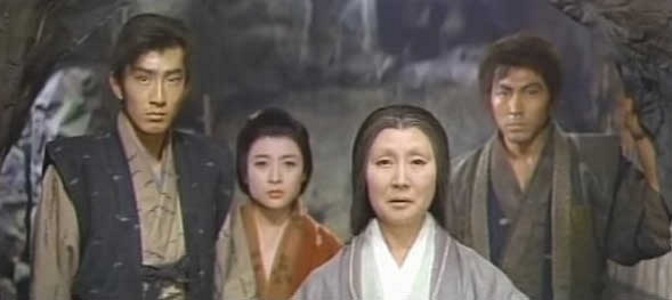
This is when the film gets interesting. As they pound a stake into its forehead, the earth begins to crumble swallowing all of them up. The very cute Kozasa (Miwa Takada) prays to Majin to come alive and save her brother and Kogenta - she offers to die for it - crush me - and damn it works. The statue shakes off its years of inactivity, takes on a green glow and has a face that reminded me of a scowling Peter Boyle. The destruction that follows is well done - using miniature models, blue screen and the good old man in a suit trick - as Majin goes on a rampage worthy of a Kaiju - but of course he doesn't have Tokyo or Edo to destroy - just a small village and a castle. Two other Daimajin films were made at the same time and released in the same year. And that was the end of Daimajin till a TV series in 2010. This is directed by Kimiyoshi Yasuda, veteran of many Zatoichi and Sleepy Eyes films and later to direct a few of the Yokai films. This is good entertainment but feels like it was possibly made with children in mind and until we get to the end, it feels fairly low budget.
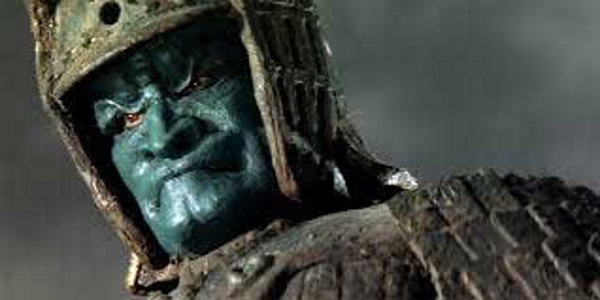
Return of Daimajin (1966) - 7.0
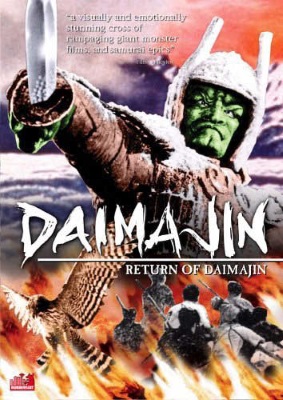
The three Daimajin films were produced at the same time and all released during the same year. There were three different directors that worked on them and fortunately Daiei had a fine roster of genre directors to choose from. In this trilogy they used Kimiyoshi Yamada for the first, Kazuo Mori for the Wrath of Daimajin and in this second one, Kenji Misumi. All three were veterans of some of Daiei's great genre samurai films; Zatoichi, Sleepy Eyes and others. I would guess that they were given some basic instructions to keep the films in line with one another but all three are different stories but with the same theme. Don't mock the Gods and don't oppress the people. All three keep their money shots for the final 20-minutes and focus on a drama until then. It is a fine release when it comes. The special effects in all three films look to have been supervised primarily by Yoshiyuki Kuroda, so there is a similarity to the look of Daimajin and the destruction that follows his appearance.
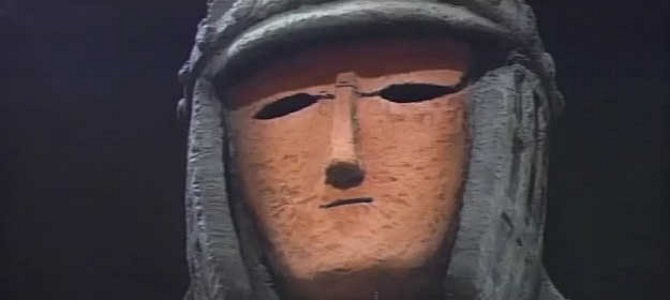
There are two clans that rule the territory around Lake Yakumo - the Chigusa Clan and the Nagoshi Clan - but they are both good rulers and get along with each other. In fact, Lord Juro (Kôjirô Hongô) of the Chigusa plans to marry Lady Sayuri (Shiho Fujimura), daughter of the ruler of the Nagoshi Clan. After the two clans commemorate the death of the Chigusa Clan leader, the Nagoshi Clan visits the island in the middle of the lake to pray to their God. And what do you know, there on the cliff is the statue of Majin looking down on them. Last seen fading away in the first film. But as they pray its face turns red and they know something is up and it isn't good. The Mikoshiba Clan that lays beyond has ambitions on taking the lake over and killing off the other two clans. Mikoshiba is a beast taking pleasure in torture and suffering - played by Takashi Kanda. Japanese films get the best actors as villains. Every inch of him oozes filth.
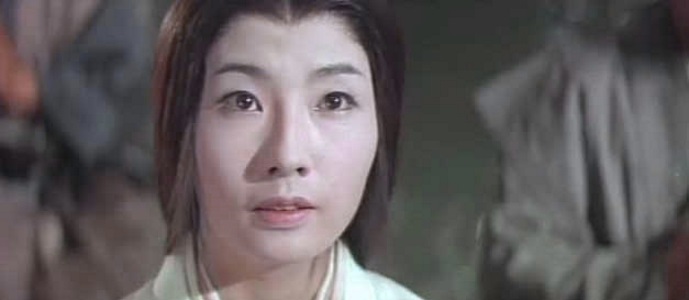
Using an old trick from Troy, Mikoshiba is able to take over Chigusa - with Juro able to escape - and then Nagoshi. But he mocks their God and pays for it. He even dynamites it. Damn, asking for trouble. There are some interesting Christian symbols to this - at one point Majin parts the seas like Moses and marches for revenge. And Lady Sayuri all in white tied to a cross with flames burning beneath her is wonderful imagery. She offers her life to Majin. At 79 minutes, this flew by and the ending is poetic and poetic justice.
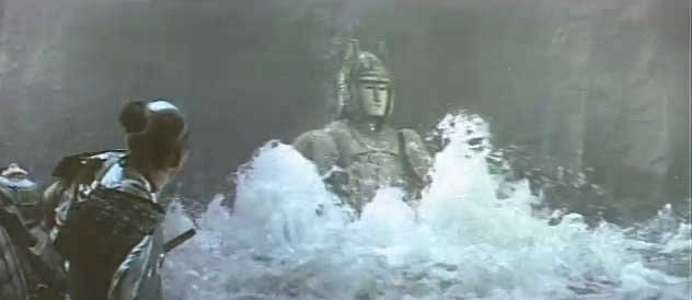
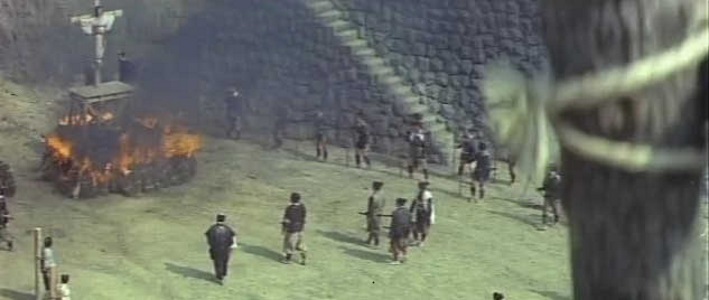
The Wrath of Daimajin (1966) - 5.5
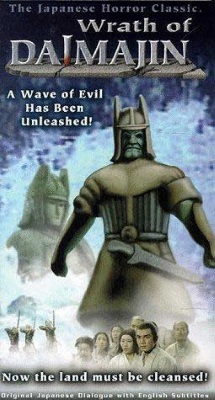
This is the third and final film in the Daimajin trilogy. It is a completely different story with all new characters. Only Majin returns. The poor guy is getting a bum rap. He gets blamed for everything - earthquakes, floods, snowstorms, poor crops - it is because Majin is angry about something. Sort of like the Christian God of the Old Testament. Let's blame God. We did something to offend him. In truth though, he is just sitting up in his mountain taking it easy as a statue with his friend the hawk keeping an eye on things. This one is a Boy's Adventure in a classic sense. Four young boys are on a quest - think of Frodo, Sam and Pippin - friends through thick and thin and danger after danger. Except these are children with the youngest about five. Clearly, meant more for children than adults and it trudges along till Daimajin goes into action at the end.
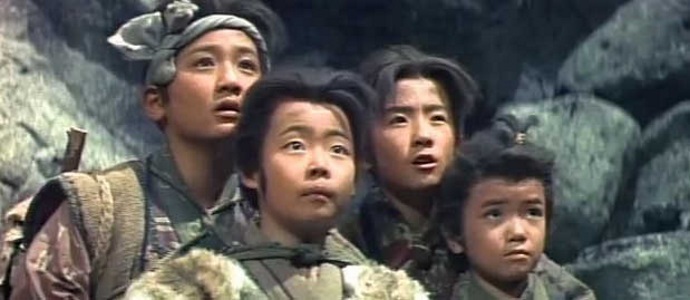
Sampei comes running into the small village bedraggled and bone weary. He tells the other villagers that the men of Lord Arakawa (the always villainous Tôru Abe) kidnapped all the wood cutters and took them into his fief to build a house for him. They are treated as slaves, whipped and starved. Their own Lord says he can do nothing because the big snows are coming. But that doesn't stop our intrepid foursome - Kinta, Daisaku, Kichi and the diminutive Sugi. Without telling anyone and loading up on buns, they decide to cross the Majin Mountain and rescue their parents. Off they go and danger awaits them at every turn - rock slides, snow avalanches, rapids and so on. Even three samurai from Lord Arakawa pick up their trail.
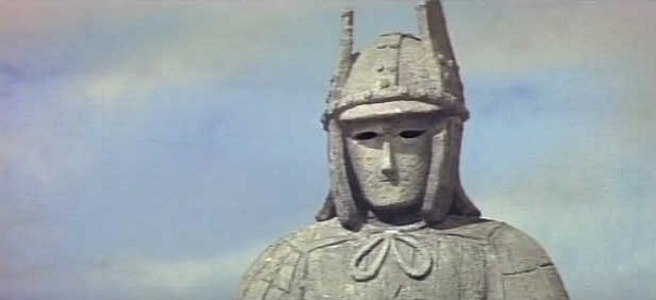
They reach the statue of Maijin and pray for his help. His hawk shows up to lead the way. And tear out eyeballs. When Maijin finally goes into action, it isn't as impressive as in the first film in terms of special effects but it is always fun to see bad guys stomped into the ground. Daimajin is played by Chikara Hashimoto in all three of the films with only his eyes visible - the rest behind a mask. He had been a baseball player until he injured himself and joined Daiei in 1960. He appeared in a number of films for the studio but also Fist of Fury in 1972. It is directed by Kazuo Mori who has a reputation filled with genre films. All three films are scored by none other than Akira Ifukube, the maestro of the Toho Kaiju films.
